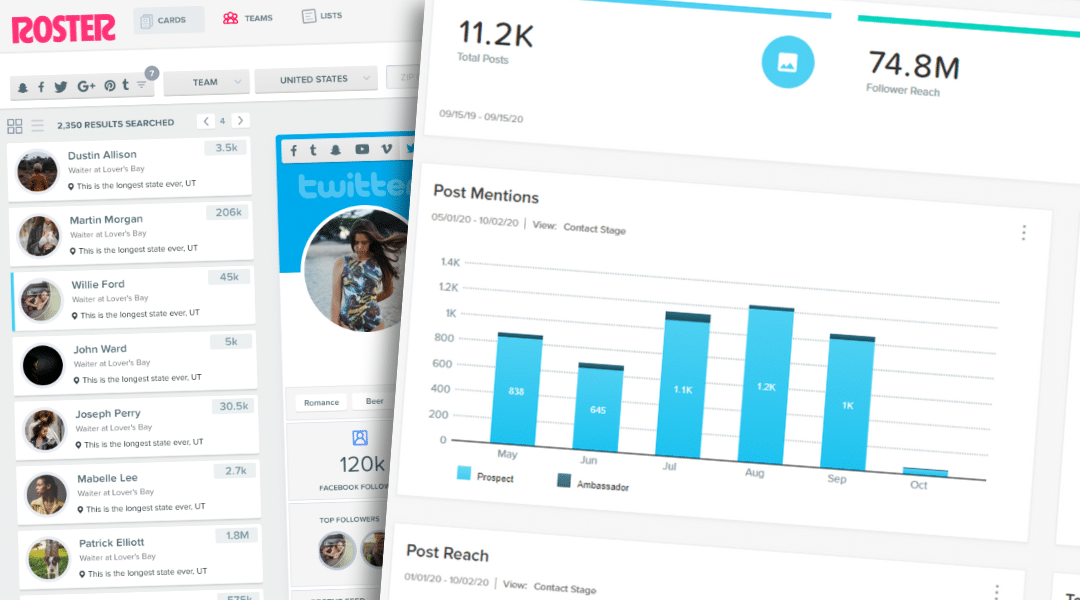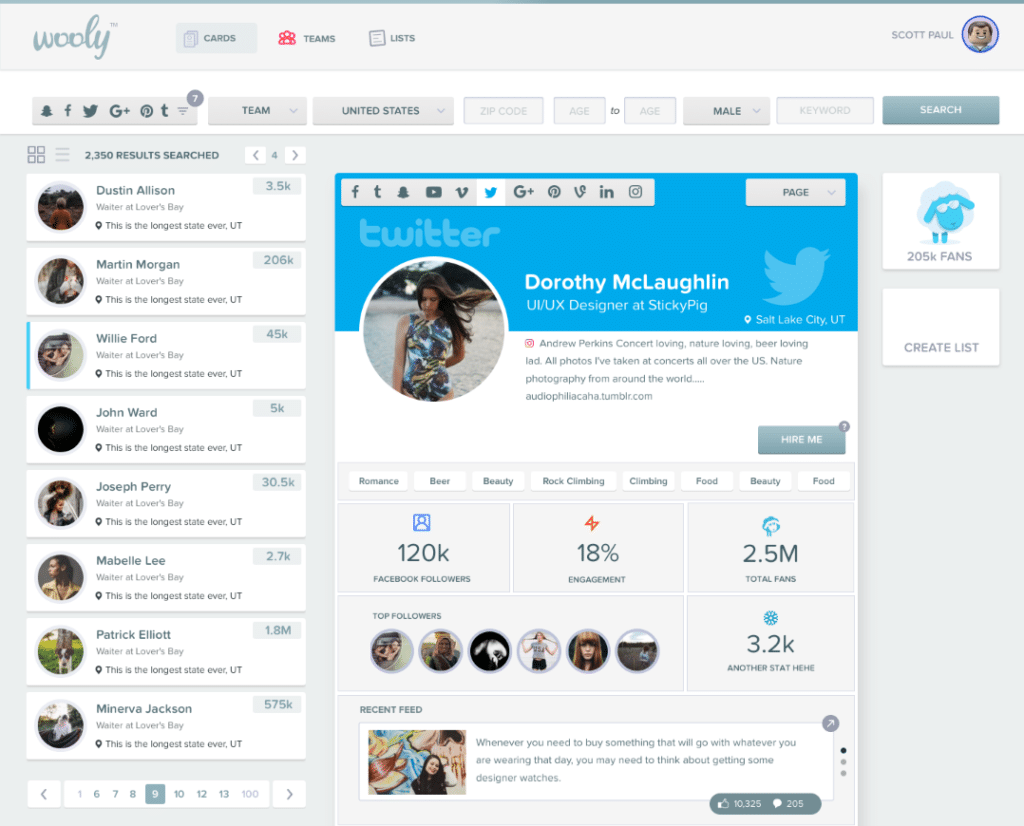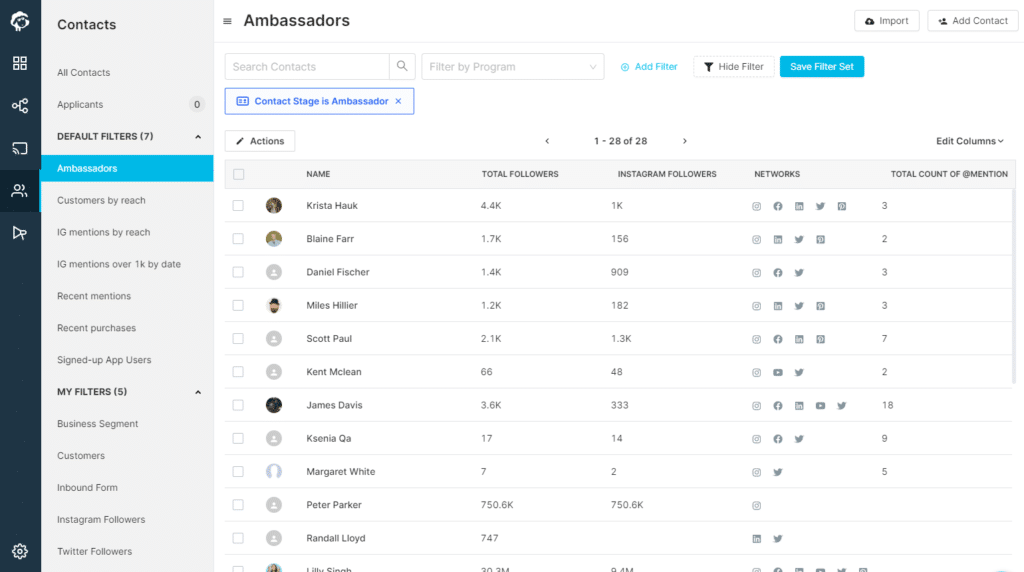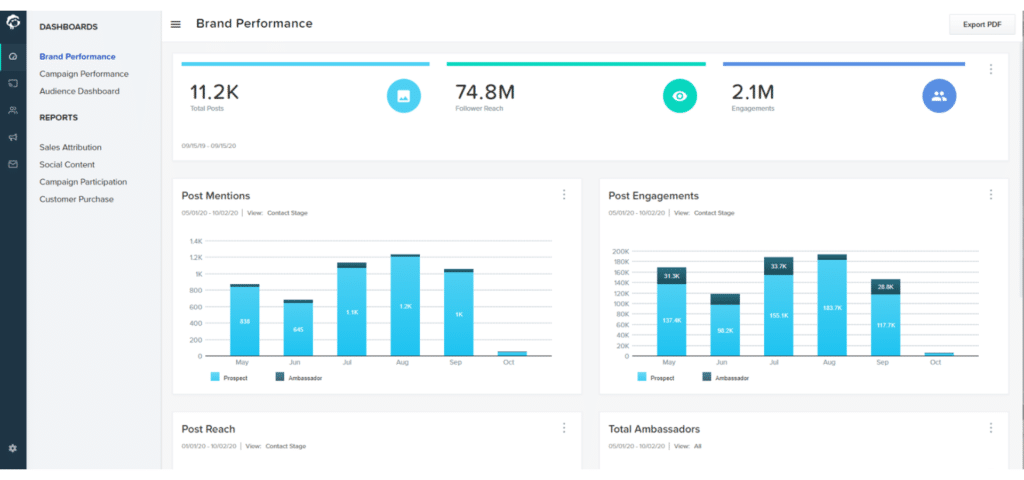
The Tech Side of Influencer Marketing Software
Through my influencer marketing software experience and as a co-founder of Roster, I had a front-row seat to major developments in the social media world. Social platforms such as Instagram, Facebook, Twitter and YouTube have changed dramatically during the last five years.
Authentic influencer marketing software
One glaring issue was the association influencers held and continue to have in product marketing. Because of their power and impact, they get paid like mercenaries to “shout out” a brand. One mention or brand photo can cost companies thousands of dollars. It all feels very disingenuous, especially when considering the exorbitant fees associated with top paid influencers and brand ambassadors.
At Roster, we started asking many questions. The prevailing puzzle was always:
How could we make influencer marketing more authentic?
Within time, the light bulb switched on. We could feel the spark, sense the energy and hear the rumble.
Why not find your most influential customers and find ways to collaborate together?
At the time, capitalizing on the influence of customers was novel, but we knew it was the right direction for the industry. Roster’s mission was set, and we began our mission to create the best influencer marketing software.
Technical challenges
Working with software in the marketing space can often feel like hitting a moving target.
Early on, social media platforms made their data more readily available. As a result, social information and insights were easier to collect. Using APIs, we could create robust interaction analyses and viewer measurements.
As more data privacy laws have been enforced and the major social platforms restrict their APIs more heavily, SaaS companies in the influencer marketing technology space have had to adapt.
I recall many SaaS companies in our industry going out of business during 2018 and 2019 when Facebook and Instagram platforms made significant data privacy adjustments.
Competing in the marketing space has been challenging for many of us. Roster is no exception, but our more unique approach to solving the needs in the market is ultimately what saved us.
Building the best influencer marketing software
You can read other great blog articles on our website that explain how Roster works. For this post, I’ll focus more on Roster’s technical journey and tech stack to explain where we started and where we are now.
What is our tech stack?
This is a question we geeks like to ask each other: “What is your stack?”
Before I answer this universal question, there is some history and background to explain.
Wooly began in 2015 as a side hustle in partnership with Scott Paul. (I must add that partnering with Scott on a startup is the best decision I’ve made in my career.) During mid-2022, Wooly rebranded to Roster.
Technology changes rapidly, and influencer marketing technology is no exception. That’s why we’ve changed our stack over the years as we use tech services that meet our business needs. The Roster product and engineering teams have had to remain agile to be ready for changes in the industry that directly impact the code and the software services we provide.
Platform hosting
In 2015 Roster started out hosting with AWS using Angular JS on the front end and C# .Net with a SQL database on the backend. We also used Atlassian tools for managing sprint work and code repositories.
The main focus was to build an MVP (minimum viable product), get investors onboard, grow the team and adapt the system to scale as needed.

CRM
The Roster MVP focused primarily on pulling in a list of brand customers and running integration processes to enrich customer profiles. We enriched customer profiles by integrating with various social platforms to gather data around a specific person and spit out search tools with reports and automatic notifications so brands can discover their most influential customers to partner with for social marketing.
A significant challenge we regularly faced was ensuring our platform security was up to snuff to pull in an extremely valuable data asset: a brand’s customer database. The subsequent difficulty was to ingest and serve all this data in a well-performing interface. It was a fun challenge I wanted to sink my teeth deep into.
As Scott used his startup superpowers to bring on more clients, I found our SQL database getting overwhelmed quickly. Feeling the need to migrate to a sharded architecture, I found that Azure’s SQL elastic pool offering was the best in the market at the time. (This was before AWS offered Aurora for PostgreSQL, and I’m not a fan of MySQL, so I wasn’t going to go there.)
Migrating to Azure met our security needs and allowed for a solid implementation of a sharded SQL architecture. The arrangement and implementation allows enterprise clients to have their own dedicated database, storing their complete customer database in isolation and encrypted at rest. Meeting this critical requirement was essential for our larger clients.
Also, we had dozens of smaller clients running in separate shared databases. This was the implementation of our sharded database architecture in a nutshell. To supercharge brand capabilities, we developed a state-of-the-art User Profiles CRM system.

Scalable influencer platforms
The scalability and cost-efficiency of the elastic database pools in Azure were a golden ticket to meeting the demands of our growing startup.
From that point on, we started building “Wooly 2.0.” The tech stack was evolving again.

Out design used the following technology:
- ReactJS on the front end
- .Net Core on the back end
- Serverless functions
- Azure cognitive search
- SQL database pools
- CosmosDB (Including No-SQL & Graph databases)
- Azure Synapse
Roster was among the first early adopters of Azure Synapse to power our BI needs. Its capabilities and cost efficiency have highly impressed us. The data lake utilizes for serverless data processing, which feeds into PowerBI reports and dashboards.
DX (developer experience) has also been a focus as we scale our team. We were previously using Atlassian tools, then moved over to Azure DevOps. The switch was a DX gain for our team. We now have everything under one hood with technical docs, sprint work, code repos, build pipelines, test plans and test automation all with analytics.
It’s impressive to recognize how much software a group of six to seven engineers and two QA have been able to build and maintain. Being a member of a fun, hardworking, reliable team and making vital contributions to the vision is always a great feeling. The team is constantly creating, eternally curious and very resilient to the challenges we face.
I hope you enjoyed this read. If you’re a geek like me and would like to work with our team to develop our influencer marketing technology, please reach out on LinkedIn. I would love to meet you.
—
James Davis
Co-Founder & CTO of Roster


